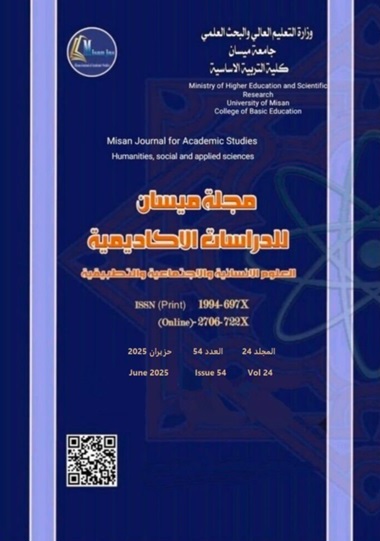External Factors and Their Impact on the Structure of the Abbasid Poem
Abstract
The thematic structure of the Arabic poem has been characterized by two distinct patterns since the pre-Islamic era. The first pattern is that of the single-structured poem, in which the poet addresses a single subject. The second pattern is the multi-structured poem, where the poet tackles more than one subject, often two or three themes within a single composition.
A variety of factors and influences contributed to shaping these patterns of poetic structure. In the Abbasid era, the single-structured poem was significantly influenced by religious and psychological factors, as well as certain intellectual movements such as Sufism and asceticism (zuhd). Additionally, urban development and environmental changes played a role in reshaping the thematic structure of poetry. For instance, poets abandoned traditional introductions like descriptions of ruins (al-muqaddima al-talliyya) and journeys, replacing them with themes more suited to their contemporary environment and lifestyle.
On the other hand, the multi-structured poem was shaped by a commitment to classical traditions and an adherence to older poetic norms established by critics based on pre-Islamic poetry. This adherence was exemplified by figures such as Ibn Qutayba, who imposed upon later poets the framework of multi-thematic compositions
Downloads
Copyright (c) 2025 (Humanities, social and applied sciences) Misan Journal of Academic Studies

This work is licensed under a Creative Commons Attribution-NonCommercial-NoDerivatives 4.0 International License.
The copyright is also the copyright of the magazine only.
All articles published in our magazine are subject to license terms
Creative Commons Attribution(CC BY-NC-ND 4.0) This license permits the content to be reproduced, redistributed and reused in whole or in part for any purpose free of charge, without any permission from the author(s), researcher or student.
Works submitted to Maysan Journal of Academic Studies for publication in the journal (CC BY-NC-ND 4.0) license terms. Where available content can be shared, distributed and replicated provided there is no commercial profit and appropriate credit must be given to the original source through sources or citations. It is mandatory to review any material used from other sources including shapes, tables, and images for re-use under the terms of the Creative Commons License (CC BY-NC-ND 4.0).Provided that there is no modification to the original content



